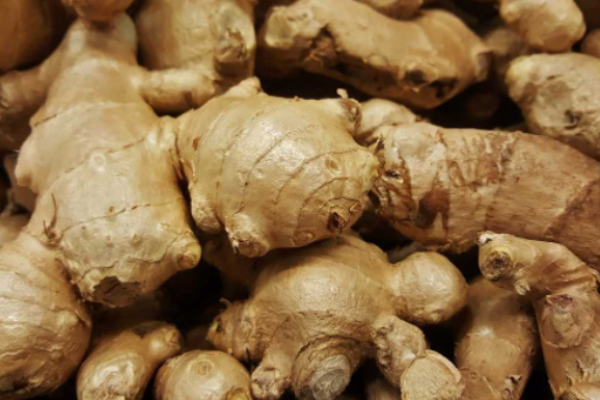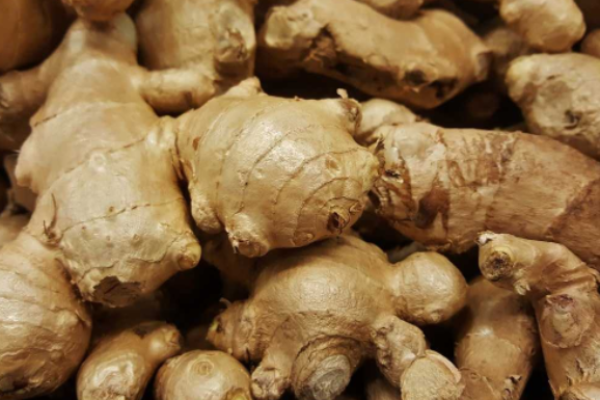Growing Ginger Hydroponically, Hydroponic Nutrients
Growing Ginger Hydroponically, Hydroponic Nutrients

Growing Ginger Hydroponically, Hydroponic Nutrients
Introduction to growing Ginger hydroponically: Ginger growing hydroponically offers advantages over other methods of cultivation. The Ginger needs much less maintenance than if you were to grow it in soil and little space is necessary for the amount of harvest you will obtain. You should plant Ginger from a piece of the root (also called a rhizome) with a visible bud. While for most of its life the plant will not grow in soil, it is helpful to start the plant in compost and move it to a hydroponic system later. The ginger plant does grow in water. Growing Ginger in water has more advantages over traditional cultivation. Growing hydroponic Ginger take less maintenance and less space. In this article we also discussed the following topics;

- Hydroponic Ginger growing conditions
- Optimal pH for Ginger growing hydroponically
- How fast do hydroponic plants grow
- Hydroponic Ginger nutrient requirements
- How long does it take to grow Ginger hydroponics
- Advantages of growing plants by using hydroponics
A step by step guide to growing Ginger hydroponically
Ginger grows very well in a hydroponics system. Ginger is a member of the Zingiberaceae family of tropical and subtropical plants. The hydroponic system has many advantages like 90% usage of less water, 0% soil requirement, and faster growth rate. Hydroponic grow plants not in soil but in water that is enriched with nutrients. The procedure is water-efficient and can be done easily in tight quarters.
Characteristics of Ginger plant
The plant itself comprises several upright, grass-like leaves that grow from the rhizome, which has fibrous and thick roots. The Ginger plant steadily expands with the production of new rhizomes (the roots come first and generate the stalks from which leaves grow). The characteristic odor and flavor of Ginger come from fragrant essential oils, mainly Gingerols, found within the rhizome.
The success or failure of Ginger production is determined by the health of the “seed pieces” or pieces of the rhizome and the health of the soil. Diseases that are particularly fusarium and pithium and pests like nematodes can seriously reduce production.
Benefits of growing Ginger hydroponically
- By providing constant and readily available nutrition, hydroponics plants grow up to 50% faster than they would in soil. And, fresh produce can be harvested from a hydroponic garden throughout the year.
- Great for the environment, hydroponic gardening virtually eliminates the need for herbicides and pesticides compared to traditional soil gardening.
- Any water that is used in a hydroponic system stays in the system and can be reused, reducing the constant need for freshwater supply.
- Arable land is in short supply and gardening space continues to decrease. A great option when you lack yard space or have a tiny balcony, hydroponics lends itself well to indoor gardening.
- Plants’ roots generally expand and spread out in search of foods, and oxygen in the soil. This is not the case in the Hydroponics system, where the roots are sunk in a tank full of oxygenated nutrient solution and directly contact with vital minerals. This means you can grow plants much closer, and consequently huge space savings.
- Hydroponic growers can have total control temperature, humidity, light intensification, the composition of the air. You can grow plants all year round regardless of the season. Farmers can produce foods at a suitable time to maximize their business profits.
- Plants grown hydroponically can use 10% of water compared to field-grown ones. In this technique, water is recirculated. Hydroponic plants will take up the necessary water, while run-off ones will be captured and return to the system. Water loss occurs in two forms – evaporation and leaks from the system (but an efficient hydroponic setup will minimize or don’t have any leaks).
Propagation of hydroponic Ginger
Ginger plants are surprisingly easy to propagate from rhizomes purchased from the supermarket, grocery market, or online. Ginger sold as fresh rhizomes, although they may have been in storage for several weeks to months before sale. The buds present on the sides of the rhizomes remain relatively flat and difficult to see. Once conditions become warm, these buds start to swell.
Process of growing Ginger hydroponically
To start Ginger in hydroponics, you will not be rooting the Ginger in water. Although for the majority of the plant’s life, Ginger will be grown hydroponically, it is best to root a piece of the rhizome in compost first and then move it to a hydroponic system later. And cut a rhizome into several pieces with a bud on each. Because it’s a good idea to plant several to ensure the germination process. Fill a pot with compost and plant the pieces about an inch or 2.5 cm deep into the soil. Then, water the pot well and regularly. Prepare a hydroponic system to receive the Ginger plants. They require about 1 square foot (.09 sq. m.) of growing room per plant. The tray you will be placing the plants in should be between 4 to 6 inches (10-15 cm.) deep. Continue to check if the rhizomes have germinated. When they have produced stems and leaves, remove the strongest plants from the soil and rinse off their roots.
Hook up the hydroponic system to water and feed the Ginger plants about every 2 hours using a standard hydroponic nutrient solution. Keep the pH level of the fluid between 5.0 and 6.0 Give the plants 18 hours of light per day, allowing them to rest for 8 hours. Within about 4 months, the Ginger plants will have produced rhizomes and can be harvested. Harvest the rhizomes, wash and dry them and then store them in a cool, dry area.
It is also possible to stick a slightly rooted piece of the rhizome into a container of water. It will continue to grow and also produce leaves. Change out the water as required. Ginger can be harvested relatively young and small; however, full-sized, large rhizomes can take anywhere from 12 to 18 months from planting. Ginger plants must be spaced 18 inches apart, provided light levels are sufficiently high. And this will give a dense canopy of foliage that makes a tall backdrop for smaller ornamental foliage and flowering plants in amenity plantings.
Systems and growing conditions for hydroponic Ginger
Drip hydroponic systems are most suitable for growing Ginger, and these heat-loving plants will happily grow alongside tomatoes, capsicums, cucumbers, melons, and other fruiting plants because they have similar nutritional requirements. Once Ginger plants have 2 to 3 leaves, light levels can be increased to full strength, with similar intensities as many other high light crops grown in indoor gardens. While shading can be tolerated and doesn’t detract from the attractive nature of the foliage, it does reduce rhizome yields and increases the harvesting time. Ginger plants are best mounded up as the rhizomes increase. Mounding refers to adding a more growing medium around the base of the plant, which helps increase crop yields and the quality of the harvested product.
Humidity requirement for hydroponic Ginger
Ideally, Ginger prefers humid conditions of 70 to 90 percent. By growing them in large, densely planted clumps, they can create their microclimate of humidity, combined with a damp growing medium, tends to lead to optimal growth. Low humidity will cause the lower, older plant leaves to develop slight tip burn, which can be trimmed if necessary. Placing Ginger plants in the most humid area of an indoor garden is the best course of action.
Hydroponic nutrients for growing Ginger
General-purpose nutrient solutions at an EC of 2.2-2.6 can be applied to Ginger crops. Though, switching to a fruiting or bloom formulation at a higher EC seems to assist with intensifying the flavor and aromatic profile of the rhizomes. Your pH levels are best maintained around 5.7 to 5.8 to maximize nutrient uptake.
Pest control for hydroponic Ginger
Look for signs of pests and diseases, such as the presence of insect pests, chewed plant leaves and foliar diseases. One diseased plant can swiftly infect all the other ones since they are close to each other. Remove any sick Ginger plants immediately. Because Ginger plants grown hydroponically don’t have to spend their energy trying to find food, they can spend more time growing. This helps them to be healthier and stronger as they can use some of that energy to fight off diseases. Because the leaves of the plants never get wet unless it rains, they’re much less likely to get leaf fungus, mildew, and mold. Even though hydroponic Ginger plants are good at fighting off diseases, they still have to fight pests. Even if it’s a hydroponic system, insects and caterpillars can nevertheless find a way into the garden. Pick off and dispose of any bugs you see.
Under optimal growing conditions, Ginger plants are relatively hassle-free crops and seem remarkably immune to common exotic plant problems such as root rot or dieback due to overwatering. They can suffer from common pest issues. With an indoor garden or greenhouse these typically contain fungus gnats during the propagation phase, and mites, thrips, and whiteflies on more mature plants, which can all damage and discolor the foliage rapidly.
Early identification and control of pests are recommended, and the large, dense canopy may provide a suitable environment for the use of integrated pest management (IPM) with introduced predator and parasite insect controls.
Posted
3 years ago
No comments yet! Why don't you be the first?











Add a comment